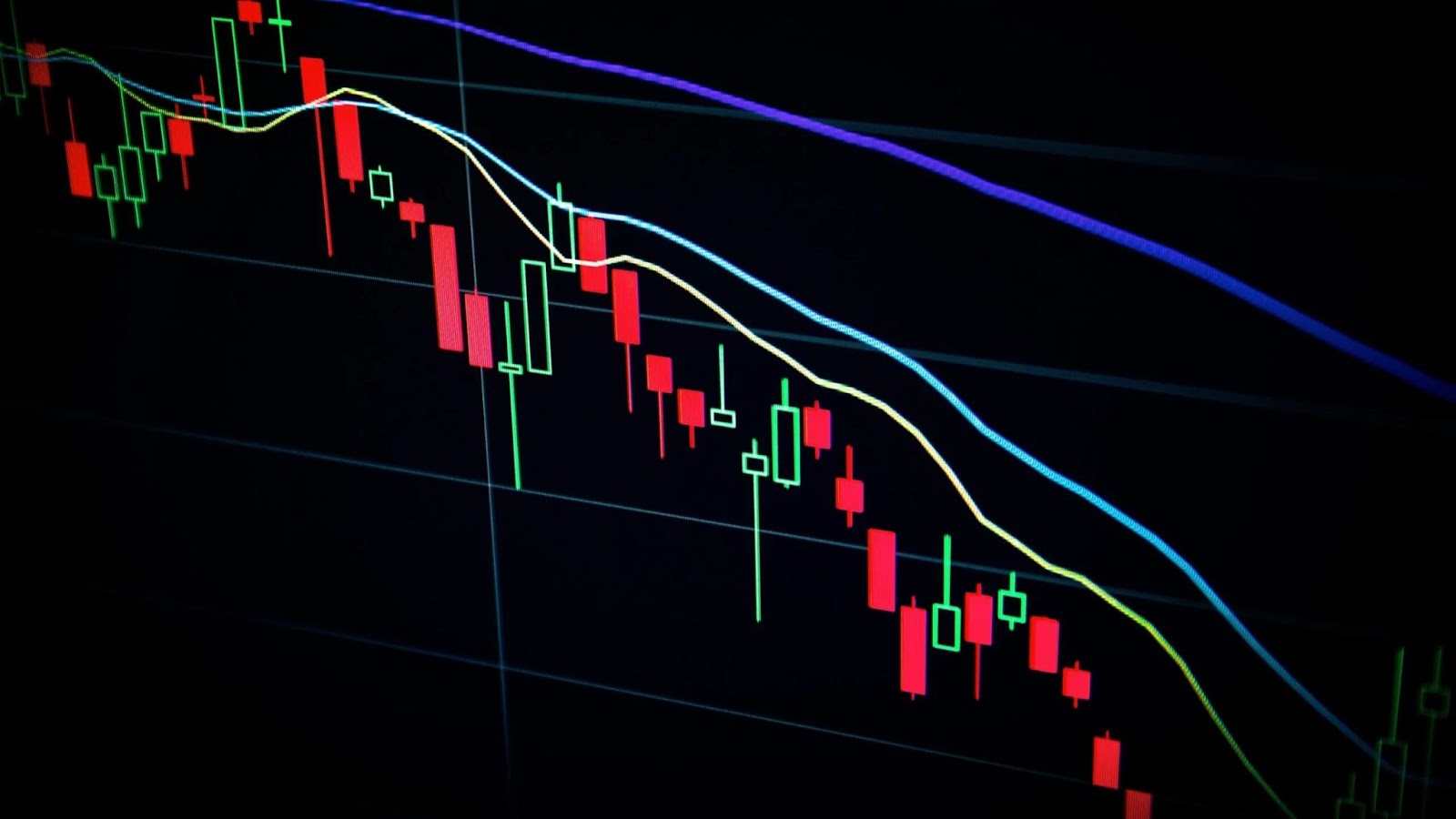Altcoin Volatility Management - Essential Techniques For Investors
Learn altcoin volatility management: strategies, risk management, and diversification for success.
Author:Stefano MclaughlinReviewer:Camilo WoodFeb 22, 20245.5K Shares96.1K Views

Altcoins, or alternative cryptocurrencies, have gained significant popularity and investment interest in recent years, offering investors diverse opportunities beyond Bitcoin. However, with this increased interest comes heightened volatility, as altcoin prices can experience rapid fluctuations driven by various factors such as market sentiment, technological developments, regulatory changes, and macroeconomic trends. In this article, we'll explore strategies for altcoin volatility management, including risk management techniques, diversification strategies, and market analysis approaches.
Understanding Altcoin Volatility
Altcoin volatility refers to the degree of variation in altcoin prices over time. Unlike traditional assets such as stocks or bonds, which may experience relatively stable price movements, altcoins are known for their high volatility, with prices often experiencing rapid fluctuations within short timeframes. While this volatility can present opportunities for significant gains, it also carries increased risks for investors.
Here's how to do altcoin volatility management effectively:
Risk Management Techniques
Effective risk management is essential for navigating altcoin volatility and protecting investment capital. One common risk management technique is setting stop-loss orders, which automatically trigger a sell order when an altcoin's price falls below a certain threshold, limiting potential losses. Additionally, diversifying your altcoin portfolio across different assets and asset classes can help spread risk and mitigate the impact of volatility on your overall portfolio.
Diversification Strategies
Diversification is a key strategy for managing altcoin volatility and reducing overall portfolio risk. By investing in a diverse range of altcoins with different use cases, market capitalizations, and risk profiles, investors can minimize the impact of price fluctuations in any single asset on their portfolio. Additionally, diversifying across other asset classes such as stocks, bonds, and commodities can further mitigate risk and enhance overall portfolio stability.
Fundamental Analysis
Fundamental analysis involves evaluating the underlying factors driving an altcoin's value, such as its technology, team, community support, and market adoption. By conducting thorough research and due diligence, investors can identify altcoins with strong fundamentals and long-term growth potential, reducing the impact of short-term price volatility on their investment decisions.
Technical Analysis
Technical analysis involves analyzing past price movements and trading volume data to identify trends and patterns that may indicate future price movements. While technical analysis can be useful for identifying entry and exit points for altcoin trades, it's essential to recognize its limitations and use it in conjunction with other analysis techniques to make informed investment decisions.
Use Hedging Strategies
Hedging is the process of establishing positions to counteract any losses resulting from unfavorable changes in the price of the underlying asset. Hedging techniques for cryptocurrencies can include using derivatives products provided by cryptocurrency exchanges, short selling, and options contracts. Hedging can reduce negative risk, but it comes with additional expenses and necessitates a solid grasp of market dynamics.
Keep A Long-Term Perspective
The markets for cryptocurrencies are quite speculative and subject to sudden swings. It's critical to keep a long-term perspective and refrain from responding rashly to changes in price in order to reduce the impact of volatility. You may tolerate short-term volatility and set yourself up for long-term success by concentrating on the core value proposition of the altcoins in your portfolio and their potential for growth over time.
Set Stop-Loss Orders
When a cryptocurrency hits a specific price, an automatic system will notify you to sell it. By reducing possible losses in the event of a sharp decrease in price, stop-loss orders can help safeguard your investment. Investors can avoid making rash decisions during times of extreme volatility and stick to their risk management plan by setting up predefined exit points.
Staking And Yield Farming
You can generate passive revenue in the form of extra tokens or interest via staking and yield farming, which are opportunities provided by several altcoins. These might be alluring opportunities to make money while keeping your assets.
Dollar-Cost Averaging (DCA)
Dollar-cost averaging (DCA) involves investing a fixed amount of money at regular intervals, regardless of an altcoin's price fluctuations. This strategy can help investors average out the cost of their altcoin purchases over time, reducing the impact of short-term price volatility on their overall investment performance. Additionally, DCA can help investors avoid the emotional pitfalls of trying to time the market.
Staying Informed And Adapting To Market Conditions
Staying informed about market developments, news, and trends is crucial for effectively managing altcoin volatility. By staying abreast of market sentiment, regulatory changes, technological advancements, and macroeconomic trends, investors can adapt their investment strategies accordingly and make informed decisions in response to changing market conditions.
Risk-Reward Ratio
It is imperative to assess the risk-reward ratio before making any investments. Investors might decide if the perceived reward outweighs the inherent risks by weighing potential returns against potential losses. Finding a balance between reward and risk is consistent with responsible risk management techniques.
Keep Your Cool During Market Swings
The price of altcoins can fluctuate quickly and without warning. Avoid making snap decisions based on your emotions in response to changes in the market. It is imperative to retain composure and reason, particularly in times of increased volatility. Refrain from giving in to panic selling or FOMO (fear of missing out), and make judgments based on well-considered strategies.
Setting Realistic Expectations
It's essential for investors to set realistic expectations when investing in altcoins, given their inherently high volatility and risk profile. While altcoins can offer significant opportunities for profit, they also carry increased risks of loss. By setting realistic goals, maintaining a long-term perspective, and managing expectations, investors can better navigate altcoin volatility and achieve their investment objectives over time.
Altcoin Volatility Management - FAQs
Are Altcoins Volatile?
Yes. Altcoins are becoming more and more common on cryptocurrency exchanges, and their value can fluctuate greatly. Any cryptocurrency that is not Bitcoin is referred to as an altcoin. They contain currency like Ether, Litecoin, and Dogecoin and frequently share code and functionality.
What Is Altcoin Volatility Management?
Altcoin volatility management refers to strategies and techniques used by investors to mitigate the impact of price fluctuations in alternative cryptocurrencies (altcoins) on their investment portfolios.
Why Are Altcoins More Volatile Than Bitcoin?
Altcoins tend to be more volatile than Bitcoin due to factors such as lower market capitalization, less liquidity, and higher susceptibility to market sentiment and speculative trading.
How Can Investors Manage Altcoin Volatility?
Investors can manage altcoin volatility through risk management techniques such as setting stop-loss orders, diversification strategies, fundamental and technical analysis, dollar-cost averaging (DCA), and staying informed about market developments.
Which Altcoin Is Most Volatile?
XXAI is most volatile with a volatility rate of 106.48%.
How Can Fundamental Analysis Help In Managing Altcoin Volatility?
Fundamental analysis helps in managing altcoin volatility by evaluating the underlying factors driving an altcoin's value, such as its technology, team, community support, and market adoption.
What Are Some Common Mistakes To Avoid In Altcoin Volatility Management?
Some common mistakes to avoid in altcoin volatility management include investing more than you can afford to lose, not conducting thorough research and due diligence, succumbing to FOMO (fear of missing out), and not having a clear investment strategy or risk management plan in place.
Conclusion
Altcoin volatility management requires a combination of risk management techniques, diversification strategies, and market analysis approaches. By implementing effective risk management practices, diversifying across different altcoins and asset classes, conducting thorough research and due diligence, and staying informed about market developments, investors can mitigate the impact of volatility on their investment portfolios and position themselves for long-term success in the dynamic world of cryptocurrency investing.
Jump to
Understanding Altcoin Volatility
Risk Management Techniques
Diversification Strategies
Fundamental Analysis
Technical Analysis
Use Hedging Strategies
Keep A Long-Term Perspective
Set Stop-Loss Orders
Staking And Yield Farming
Dollar-Cost Averaging (DCA)
Staying Informed And Adapting To Market Conditions
Risk-Reward Ratio
Keep Your Cool During Market Swings
Setting Realistic Expectations
Altcoin Volatility Management - FAQs
Conclusion

Stefano Mclaughlin
Author

Camilo Wood
Reviewer
Latest Articles
Popular Articles

